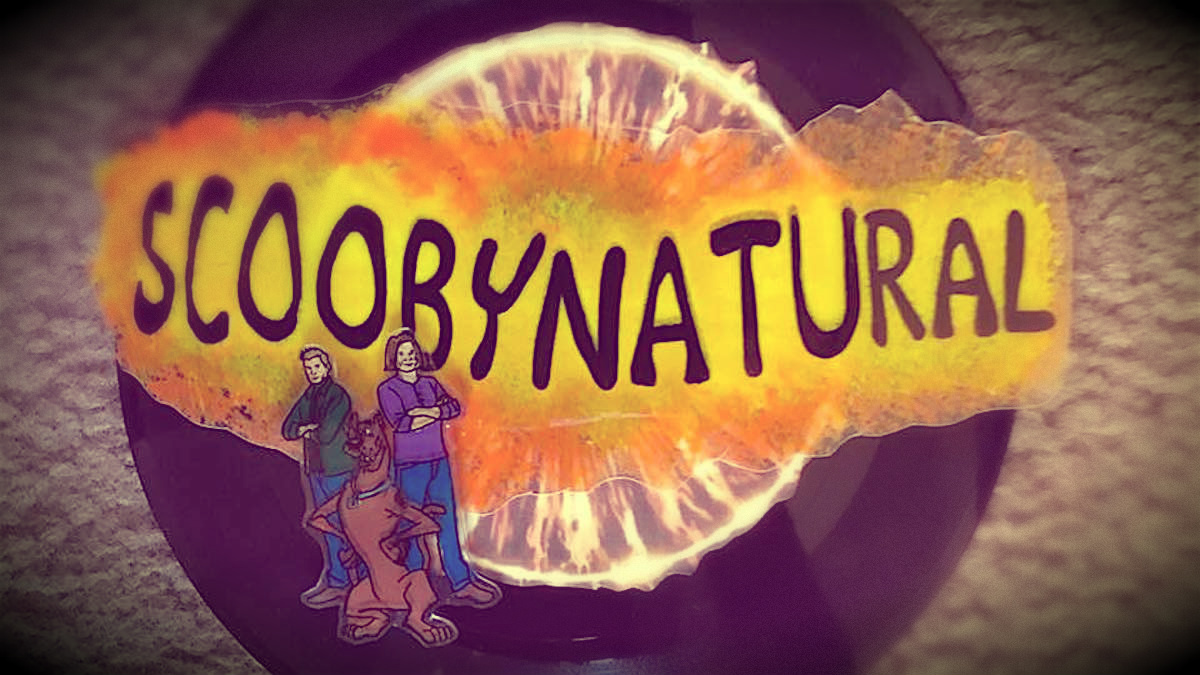
On March 29, The CW finally aired a Supernatural/Scooby-Doo “ScoobyNatural” episode, and it reminded me why I love old school animation.
The first animated cel I ever saw, as a matter of fact, had been in our home long before I was even born.
In the summer of 1955, my mother was 15-years-old and visiting family in California. They took her to this “brand new amusement park” called Disneyland that hadn’t even been open a week. She didn’t have much money for souvenirs, but since her favorite character was Tramp from Lady and The Tramp, she found a picture of him on celluloid for $1.50. This pretty much used up her spending money, but it was worth it because this image had been used in the movie.
Today, an original collector animation cel of Tramp can come with a three- or four-digit price tag depending on the condition, but thankfully my mom’s old souvenir is still in the family.
When I was a teenager in the 1980s, I was fascinated by animation cel art, but even then the cost of collecting them was getting crazy. So I made my own.
I found old discarded overhead projector sheets from my dad’s office, traced over cartoon images from books, magazines, and catalogs, painted them, and placed them over a solid piece of construction paper.
I even thought about selling some to friends, but my mom reminded me that would be “counterfeiting,” and is in fact frowned upon by animation companies.
I kept these in my room or dorm all through high school and most of college. Then I “grew up” and threw them all away, for idiotic reasons I still can’t fathom. I hadn’t really thought about these projects until I watched the ScoobyNatural episode. My teenager loves Supernatural, we all love Scooby, and I caught the cel-making bug once more.
This process is even easier today, as being able to print out images we find in the size we want is at our fingertips. Office and craft stores make it easier and more affordable to purchase paint and clear paper.
Original Scooby-Doo cels from the old shows are still available and still pricey. Some are even signed by prominent series animator Bob Singer, a name that seems to foretell the Scooby gang’s future meet-up with the Winchesters. Yes, Supernatural bigwig Robert Singer even directed the ScoobyNatural episode.
For those who want a cool DIY, creating ScoobyNatural or any other favorite animation “cel” is something even those with absolutely no drawing skill or experience can do. You just have to know how to trace.
First, find the image you want and print it out on white paper (I prefer cardstock because you are going to keep the image if you want to use the background).
Place a piece of clear acetate, mylar, or similar material over the picture and tape the corners to hold it in place. You can get these transparent sheets at craft, school, or office supply stores. Shrink art paper works well, too, if you want to make charms. Next, trace over the “foreground” images with a fine line felt tip marker. These include the characters and sometimes significant props, furniture, or vehicles.

Place the printed image aside until later. When watching an animated production, remember the backgrounds are created separately to give a sense of depth.
When the marker has completely dried, turn the image over on a white or light surface so you can see it well. Using acrylic or craft paint, paint the smaller details first (patterns on clothes, facial features, etc.). Use the printed image as a reference, or create your own color scheme. You can also use gel pens for the smaller details. Let this layer dry completely, and then fill in the larger areas, covering the smaller areas. If you get outside of the edges, wait until it dries and carefully scrape off the excess with a wooden toothpick. Don’t use anything that will scratch your clear paper.

Turn this image over and align it with the original printed image. Hold the edges in place with clear craft glue. There! You have a “cel.” Be creative and add your own backgrounds or solid colors if you just want a “study” of the characters.
You don’t have to make these cells full “letter” size, either. Two or three 5″ x 7″ or “postcard” size images look cool arranged together. Think outside the box (or picture frame). I added a ScoobyNatural intro logo design cel using an old 45 vinyl record as a background to balance out the retro look. I then tacked a shrink art cell image on for fun.

For those who do like to draw freehand, find one of your own favorite pieces of fan art or original characters, and try this with your own images.
These make great room decorations or look good on gift cards for Supernatural and Scooby fans.
Not everyone can afford to pick up original cel art, but with a little creativity and paint, you can have the next best thing.
Like, right, Scoob?



